Innovation
Afsluitdijk:
32 kilometres of innovation
The Dutch Afsluitdijk is an icon with a long history. In the next few years, several innovative features will be introduced.
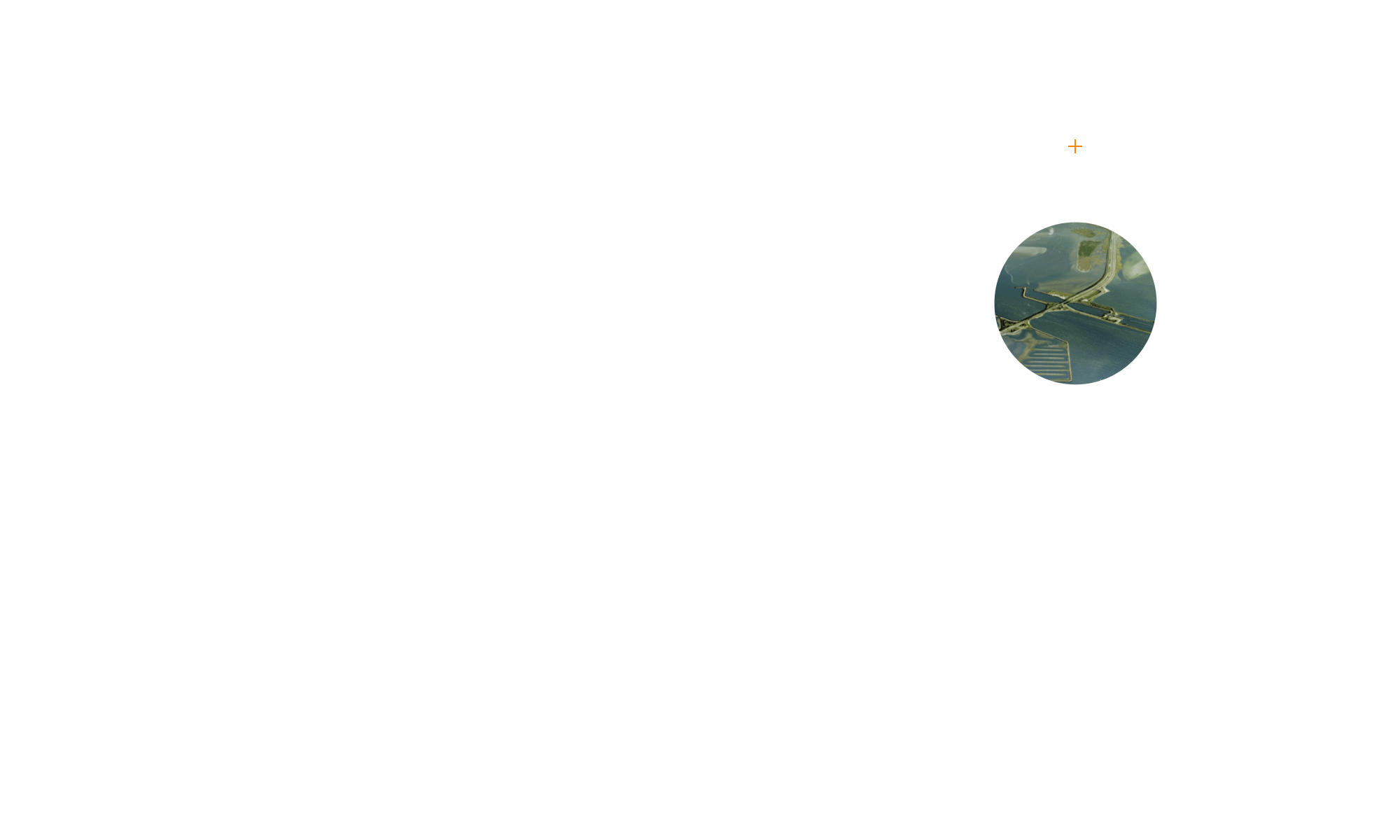
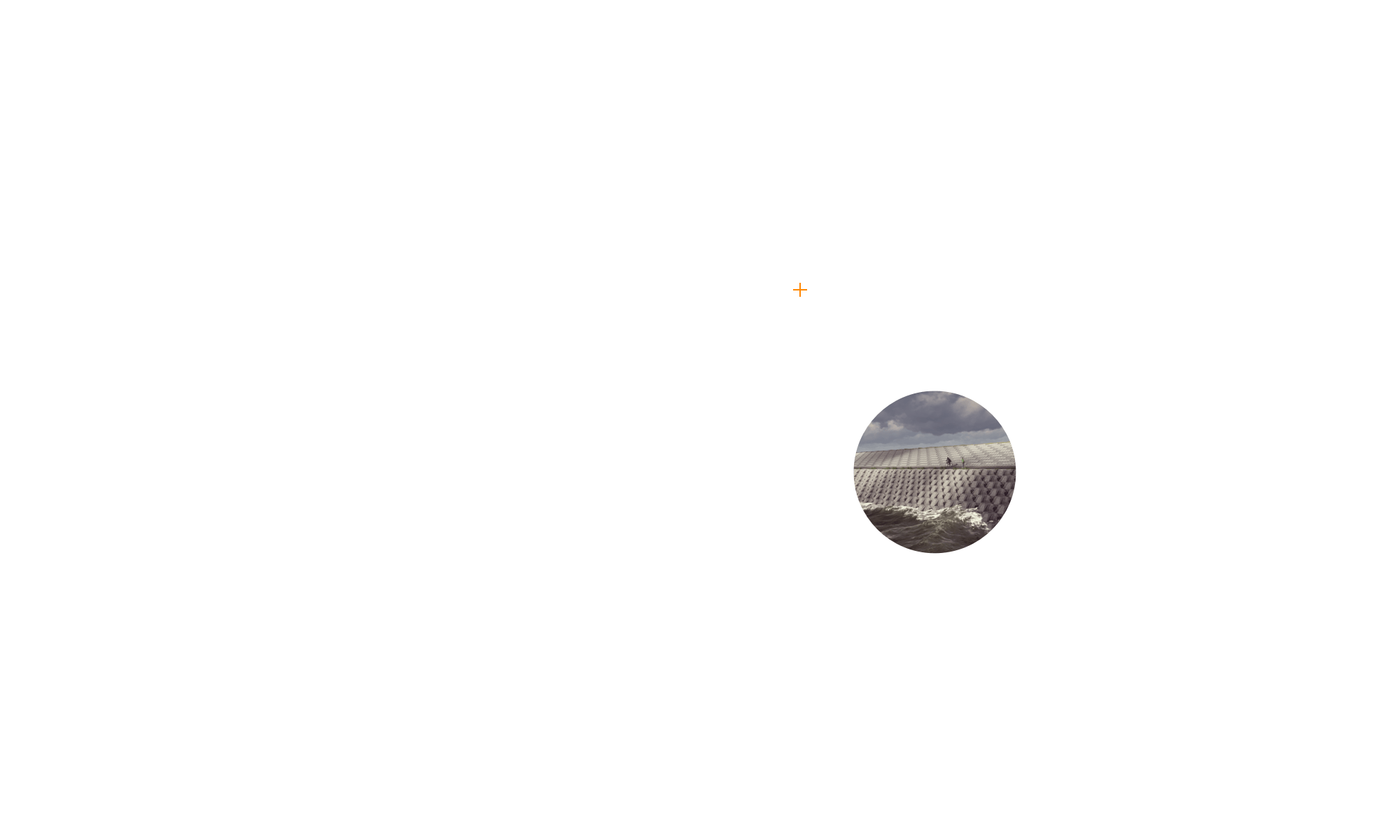



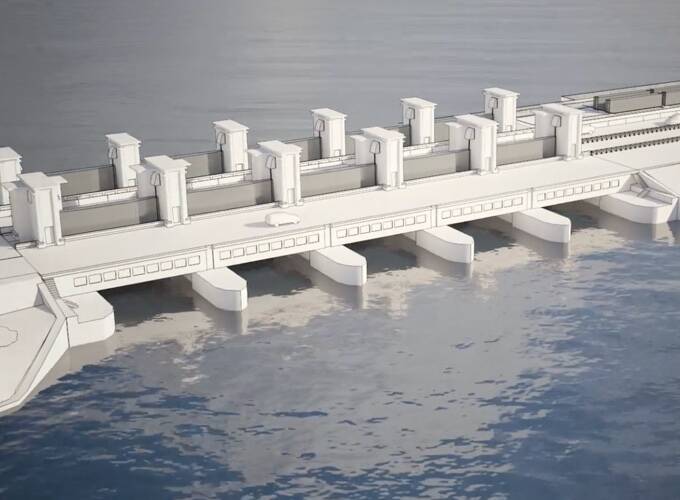
The New Afsluitdijk
32 km of innovation

the reinforcement of the Afsluitdijk and maintaining it for a period of 25 years. Levvel is a consortium consisting of Van Oord (in collaboration with Aberdeen Standard Investments and APG Group), BAM (in collaboration with PGGM) and Rebel (in collaboration with Epico).
economy. A bike path will be constructed and the motorway will be adjusted over more than 32 kilometres. Following completion, the Netherlands will again have an iconic project as a symbol of the innovative character of Dutch marine engineering.
Levvel, contracted by Rijkswaterstaat, will be designing, constructing and financing
The reinforced Afsluitdijk
The Afsluitdijk will combine various objectives and functions. Reinforced hydraulic structures and two new highwater protection locks will protect the hinterland from flooding. Location and circumstances will be exploited for innovative technology and sustainable energy. Water, current and nature will be used to increase the range of species and new touristic and educational features will strengthen the regional
surrounded by an ecological area accessible to visitors. As a result of the permanent opening and the different current speeds in the migration river, it should be possible for migrating fish to swim freely from fresh to salt water and vice versa. Levvel is constructing the opening in the Afsluitdijk to enable fish migration.
Fish migration river
To restore the connection between the Wadden Sea and the IJsselmeer lake for migrating fish, a migration river is being constructed by ‘De Nieuwe Afsluitdijk’, a partnership between the provinces of Friesland and Noord-Holland and the municipalities of Súdwest-Fryslân, Hollands Kroon, and Harlingen. This will be a 4 kilometre long fish passage
New discharge
sluices and pumps
The sluice complex at Den Oever will be extended to include new discharge sluices in the intermediate islands. This will allow more water that enters the IJsselmeer lake via the River IJssel to be drained into the Wadden Sea. If water levels are high in the Wadden Sea, discharging is not possible. For this reason, two large pumping stations are being constructed in Den Oever.
The pumps will operate with very low energy consumption and are fish-friendly. All energy, including used by the pumps, will be compensated by 2.7 hectares of solar panels near Den Oever, resulting in an energy neutral dike.

Carlos Mollet
Project Director Levvel
Levvel increases the capacity to discharge water with as little energy consumption as possible: discharging when possible, pumping when necessary. Our client provided space for compensating the energy consumption by means of solar energy. As a result of our solution, we only have to use 10% of this space.


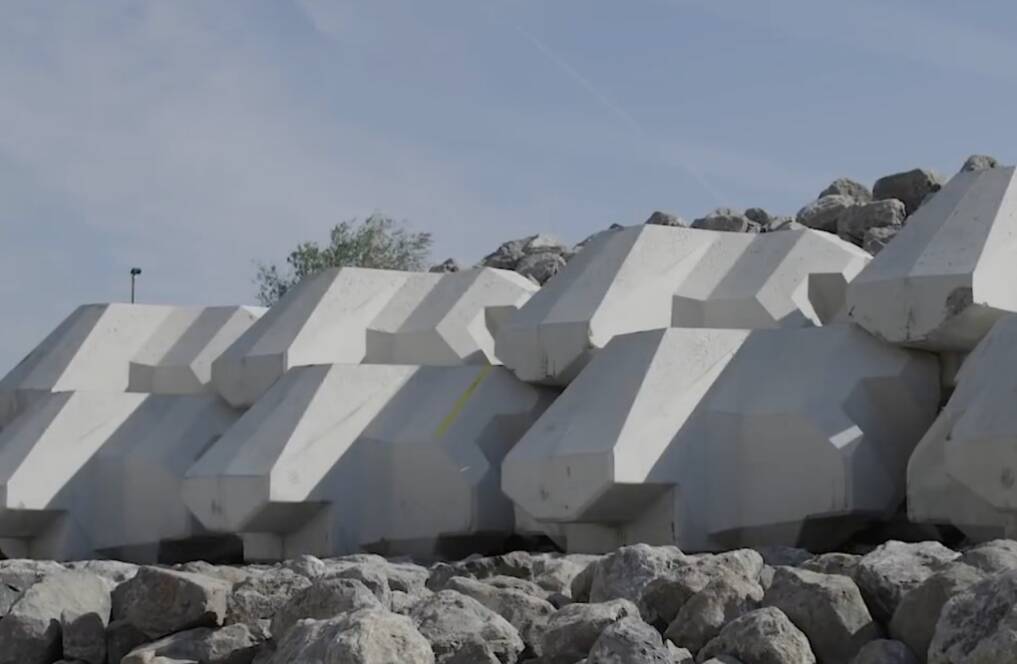
Dyke reinforcement
using Levvel-blocs
On the Wadden Sea side, the dyke will be raised and reinforced by means of a new revetment. We will be using Levvel-blocs on most of the lower slope. Levvel-blocs, an application of the innovative XblocPlus, are concrete armour units developed especially for the Afsluitdijk. The blocks weigh approximately 6,500 kilogram each, they have a wave-retarding effect, are easy to place and don’t require the deployment of divers. At least 100 blocks a day will be produced in Harlingen by a fully automated process and transported over water to the dyke. Compared to alternative revetment, 35% less concrete is used when producing the innovative Levvel-blocs. This equals approximately 200,000 cubic metres concrete and leads to 40,000 tons of CO2 reduction, a reduction of no less than 56%.
On each Levvel-bloc a RFID chip will be attached on which all relevant Qa/QC documentation is stored. A total of approximately 75,000 Levvel-blocs will be placed from a crane barge. Thanks to their symmetrical shape, the blocks will create a calm, even appearance that will strengthen the rather taut, autonomous character of the dyke.
Afsluitdijk: 32 kilometres of innovation
Three innovative measures
Thanks to various measures the energy neutral Afsluitdijk will ensure increased traffic safety and continue to resist the power of the water until at least 2050. We are singling out three of many innovations:


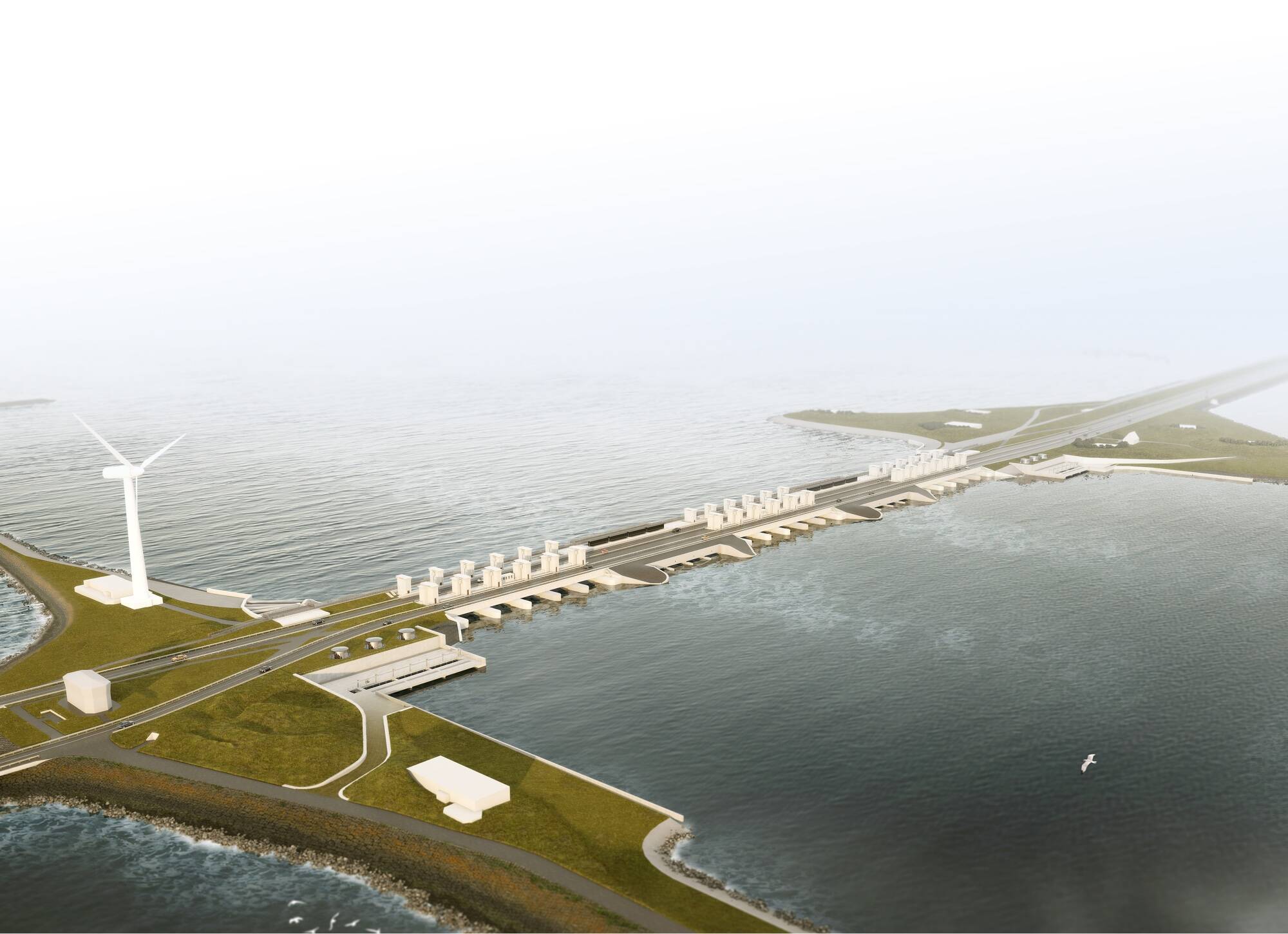
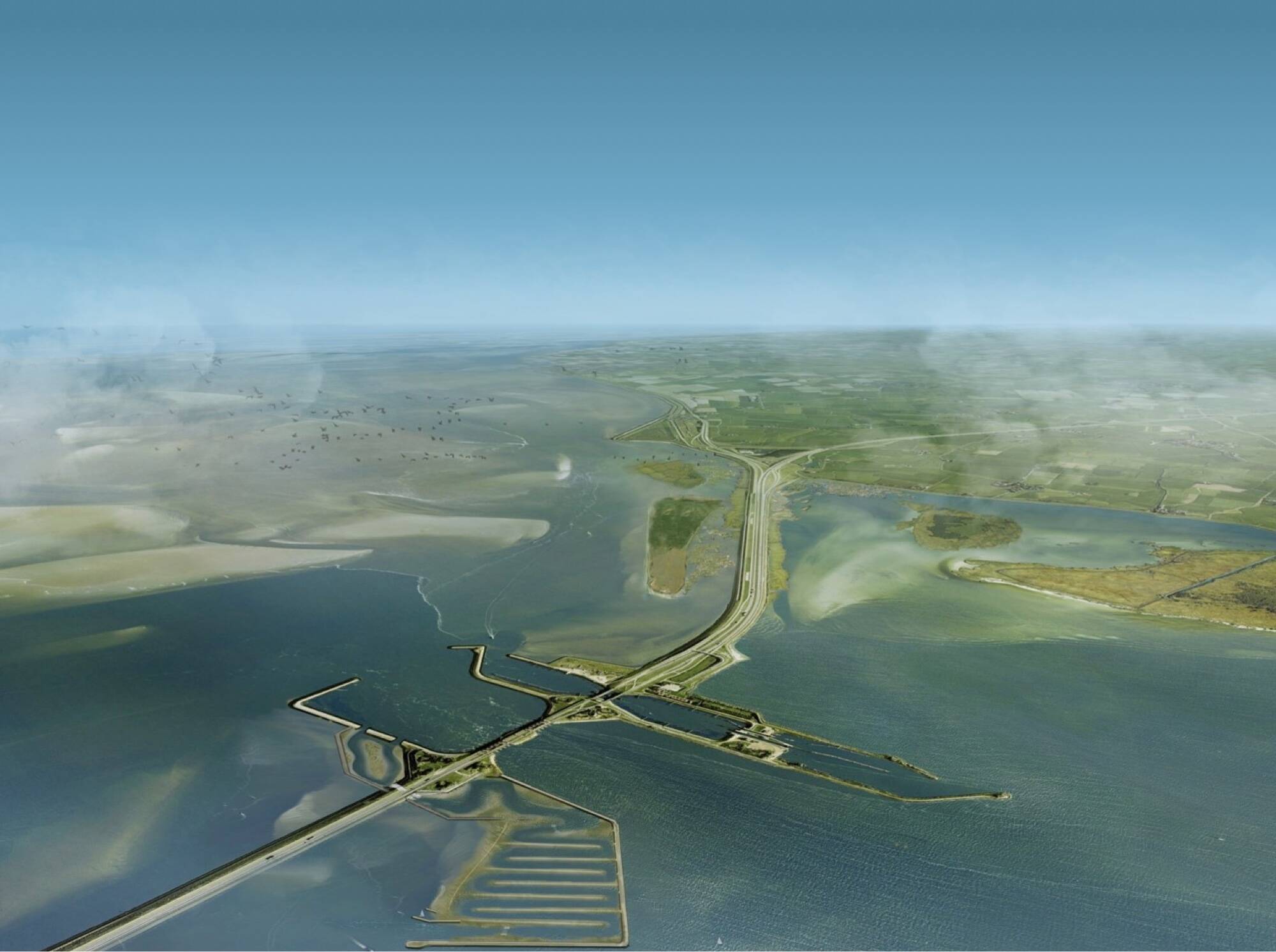

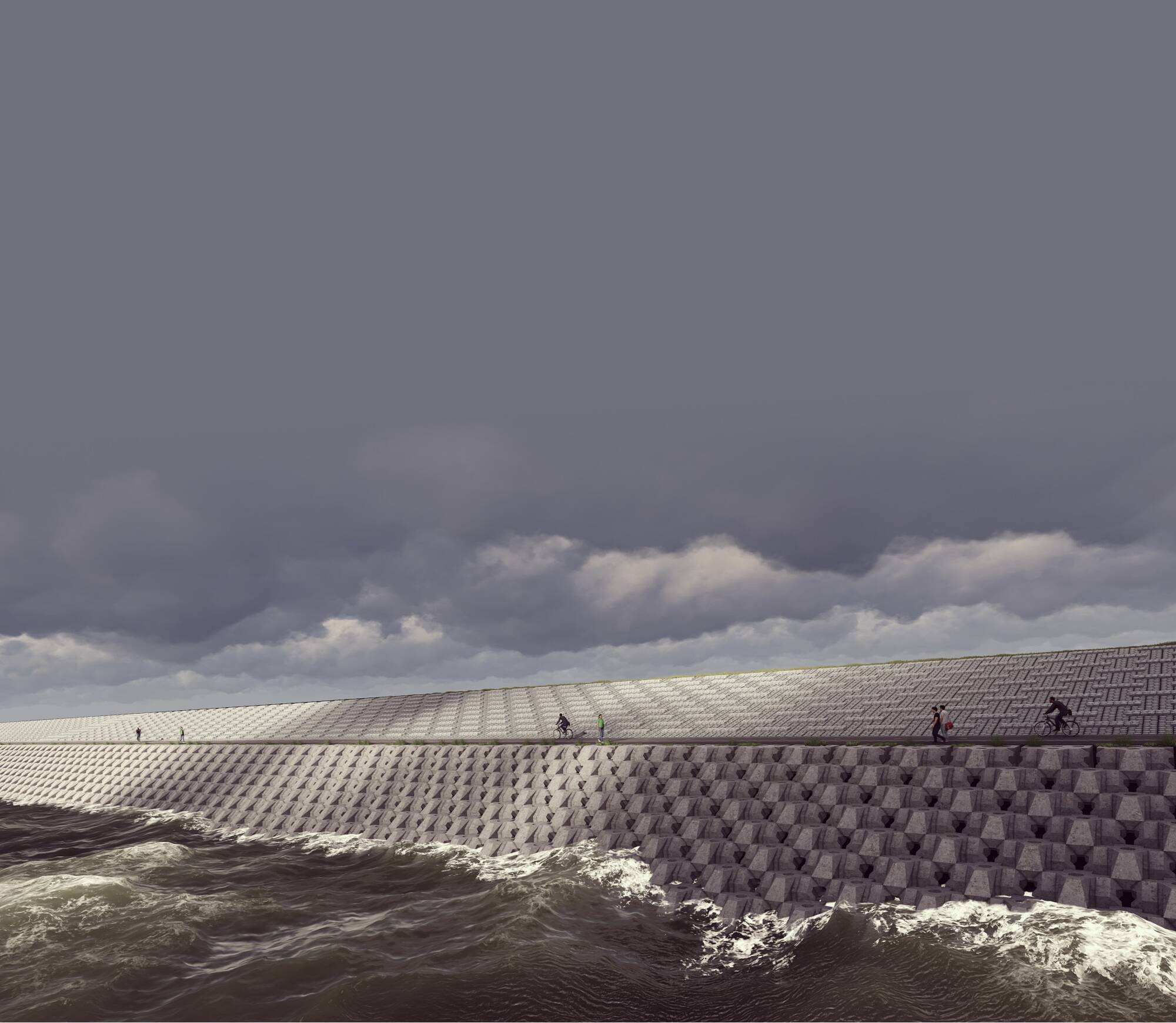
The Dutch Afsluitdijk is an icon with a long history. In the next few years, several innovative features will be introduced.
32 kilometres of innovation
Afsluitdijk:
Innovation
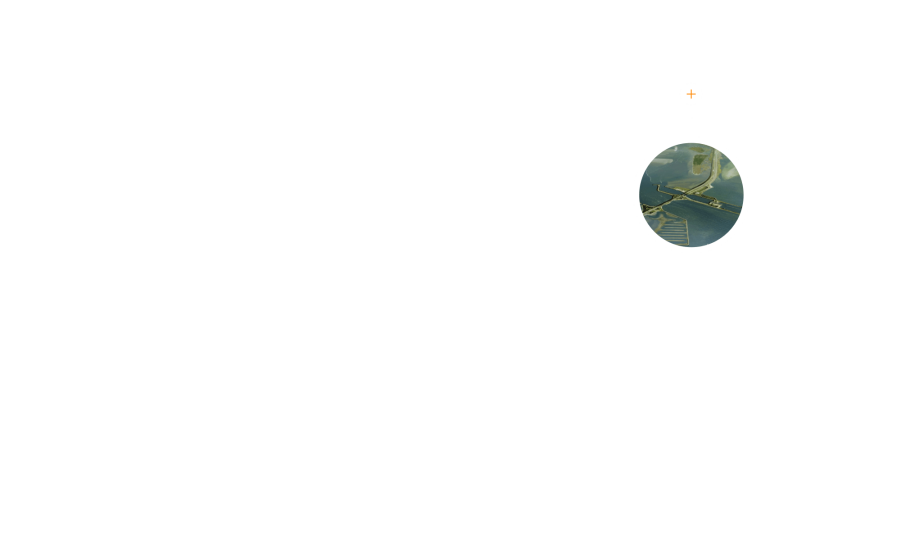
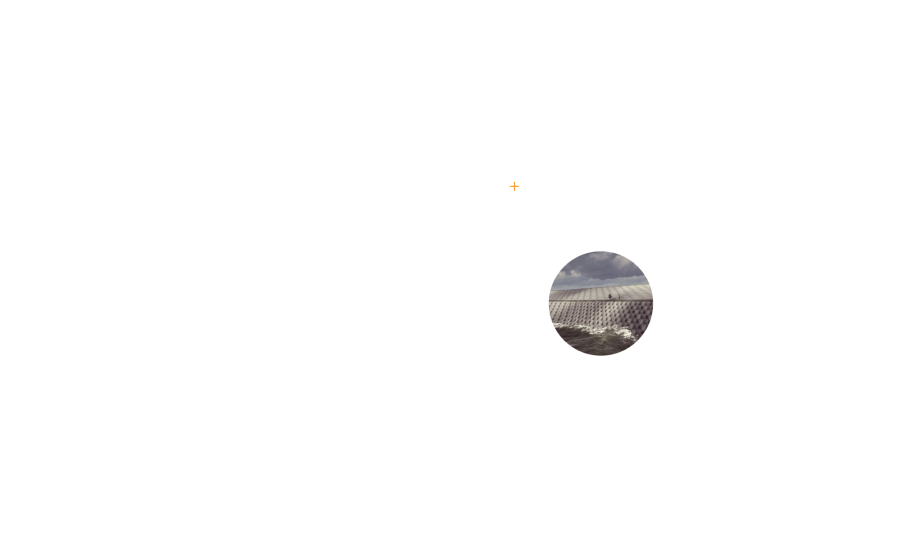
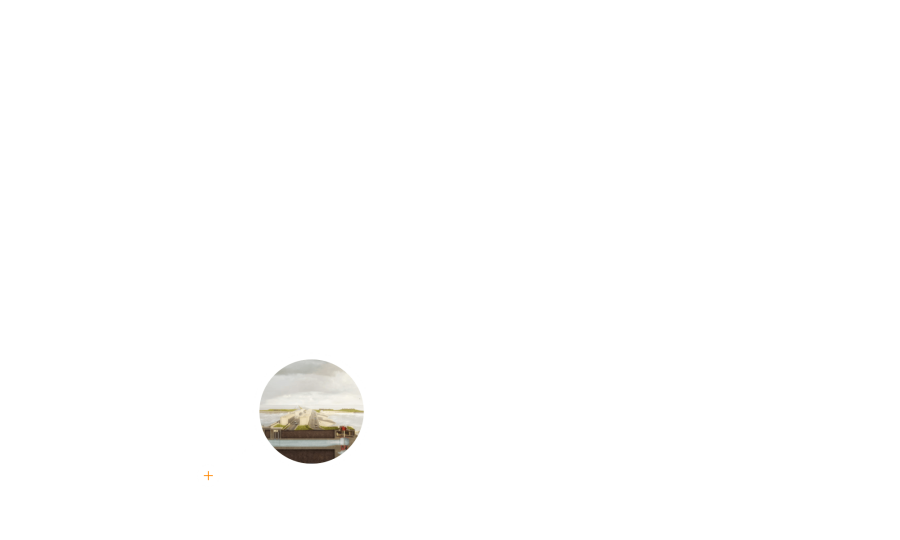

Dyke reinforcement

New sluices

Opening fish migration

The reinforced Afluitdijk


The New Afsluitdijk
2018 - 2023: The work started in late 2018 and is expected to be finished in 2023
Long term maintenance: Since October 2018, Levvel is responsible for the maintenance of the dike. This continues until 2047.

Levvel-bloc: The Afsluitdijk will be reinforced using 75,000 Levvel-blocs, each weighing approximately 6,500 kg

32.5 km: The total dyke is 32.5 km long and the dam section is 30 km long

1932: The Afsluitdijk opened in 1932 and has therefore been in use for almost 87 years

Facts & figures
The Afsluitdijk will combine various objectives and functions. Reinforced hydraulic structures and two new highwater protection locks will protect the hinterland from flooding. Location and circumstances will be exploited for innovative technology and sustainable energy. Water, current and nature will be used to increase the range of species and new touristic and educational features will strengthen the regional economy. A bike path will be constructed and the motorway will be adjusted over more than 32 kilometres. Following completion, the Netherlands will again have an iconic project as a symbol of the innovative character of Dutch marine engineering.
Levvel, contracted by Rijkswaterstaat, will be designing, constructing and financing the reinforcement of the Afsluitdijk and maintaining it for a period of 25 years. Levvel is a consortium consisting of Van Oord (in collaboration with Aberdeen Standard Investments and APG Group), BAM (in collaboration with PGGM) and Rebel (in collaboration with Epico).
The reinforced Afsluitdijk

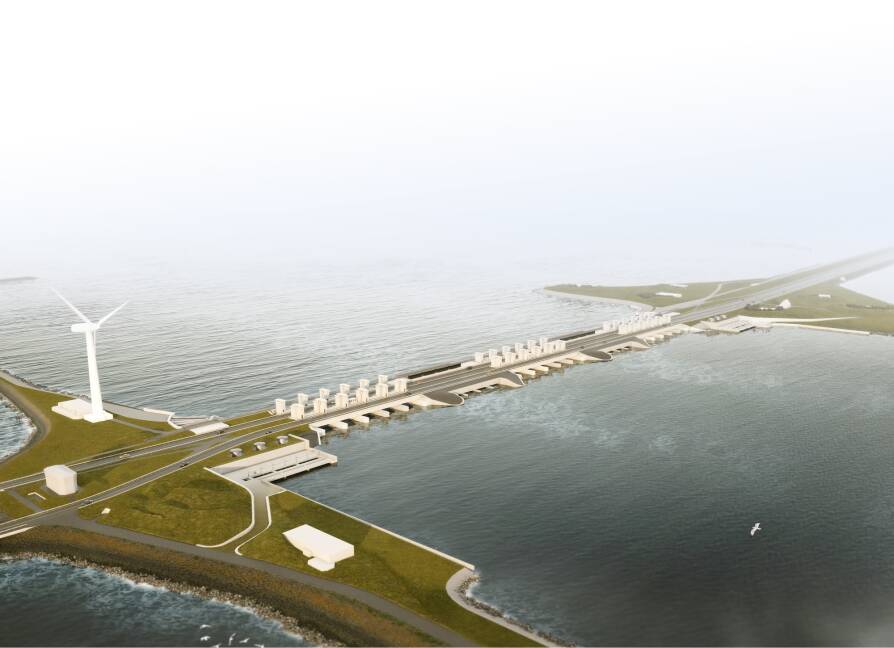
To restore the connection between the Wadden Sea and the IJsselmeer lake for migrating fish, a migration river is being constructed by ‘De Nieuwe Afsluitdijk’, a partnership between the provinces of Friesland and Noord-Holland and the municipalities of Súdwest-Fryslân, Hollands Kroon, and Harlingen. This will be a 4 kilometre long fish passage surrounded by an ecological area accessible to visitors. As a result of the permanent opening and the different current speeds in the migration river, it should be possible for migrating fish to swim freely from fresh to salt water and vice versa. Levvel is constructing the opening in the Afsluitdijk to enable fish migration.
Fish migration river
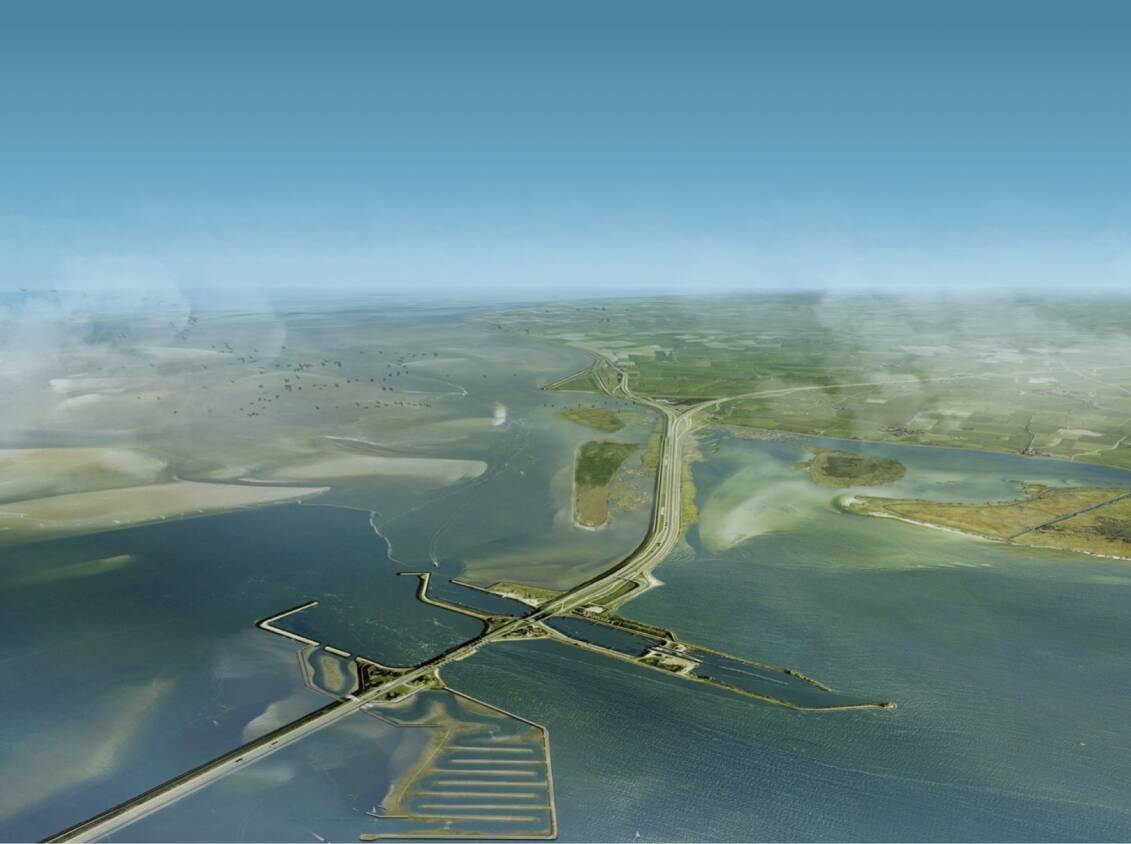

The sluice complex at Den Oever will be extended to include new discharge sluices in the intermediate islands. This will allow more water that enters the IJsselmeer lake via the River IJssel to be drained into the Wadden Sea. If water levels are high in the Wadden Sea, discharging is not possible. For this reason, two large pumping stations are being constructed in Den Oever.
The pumps will operate with very low energy consumption and are fish-friendly. All energy, including used by the pumps, will be compensated by 2.7 hectares of solar panels near Den Oever, resulting in an energy neutral dike.
New discharge
sluices and pumps
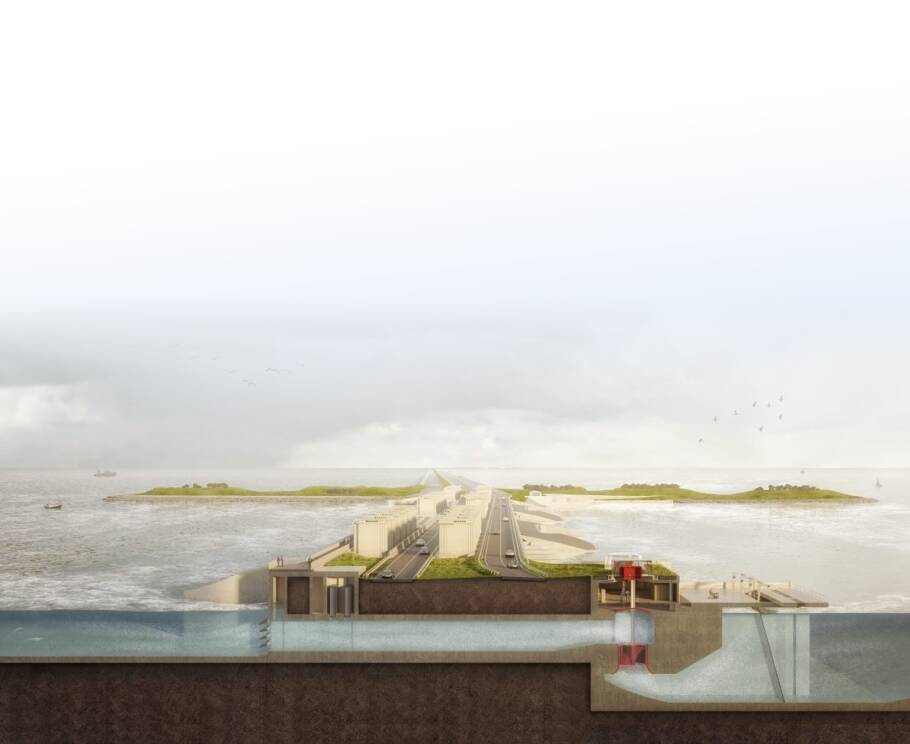

Carlos Mollet
Project Director Levvel
Levvel increases the capacity to discharge water with as little energy consumption as possible: discharging when possible, pumping when necessary. Our client provided space for compensating the energy consumption by means of solar energy. As a result of our solution, we only have to use 10% of this space.


On the Wadden Sea side, the dyke will be raised and reinforced by means of a new revetment. We will be using Levvel-blocs on most of the lower slope. Levvel-blocs, an application of the innovative XblocPlus, are concrete armour units developed especially for the Afsluitdijk. The blocks weigh approximately 6,500 kilogram each, they have a wave-retarding effect, are easy to place and don’t require the deployment of divers. At least 100 blocks a day will be produced in Harlingen by a fully automated process and transported over water to the dyke. Compared to alternative revetment, 35% less concrete is used when producing the innovative Levvel-blocs. This equals approximately 200,000 cubic metres concrete and leads to 40,000 tons of CO2 reduction, a reduction of no less than 56%.
On each Levvel-bloc a RFID chip will be attached on which all relevant Qa/QC documentation is stored. A total of approximately 75,000 Levvel-blocs will be placed from a crane barge. Thanks to their symmetrical shape, the blocks will create a calm, even appearance that will strengthen the rather taut, autonomous character of the dyke.
Dyke reinforcement
using Levvel-blocs
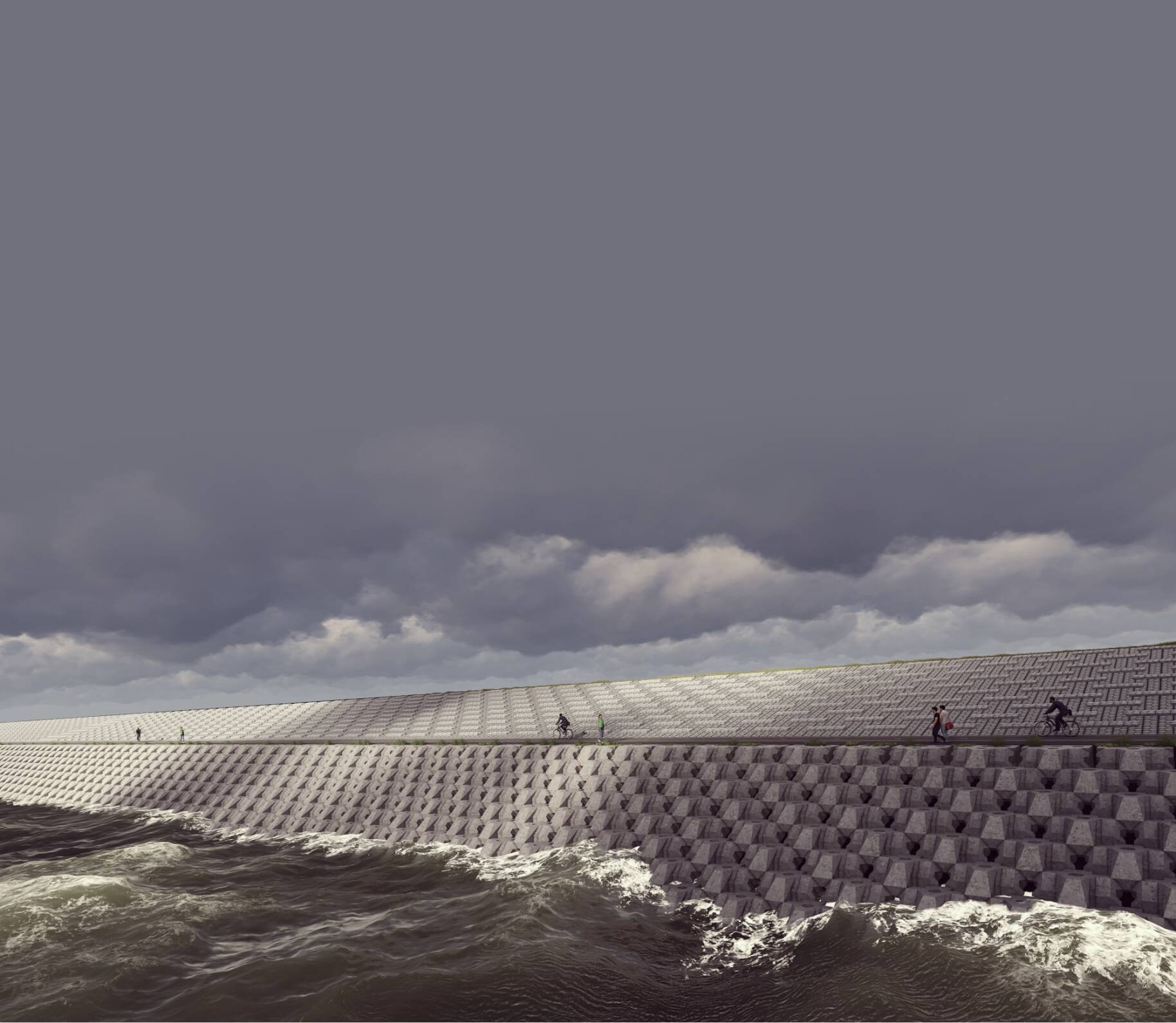

An opening in the Afsluitdijk for a fish migration river
New discharge sluices and pumps

Dyke reinforcement using Levvel-blocs

Thanks to various measures the energy neutral Afsluitdijk will ensure increased traffic safety and continue to resist the power of the water until at least 2050. We are singling out three of many innovations:
Three innovative measures

